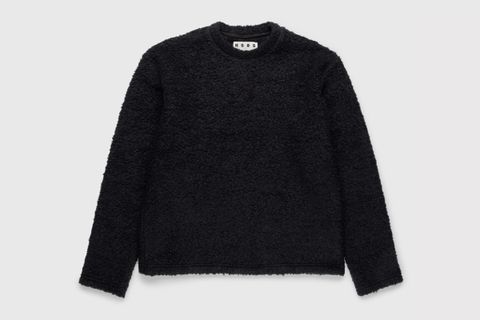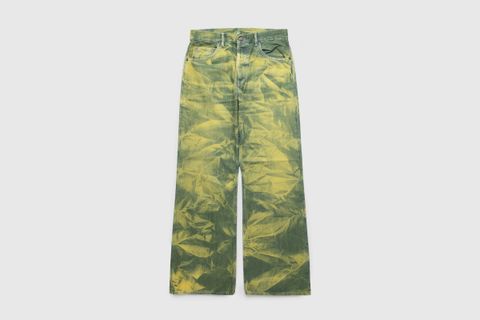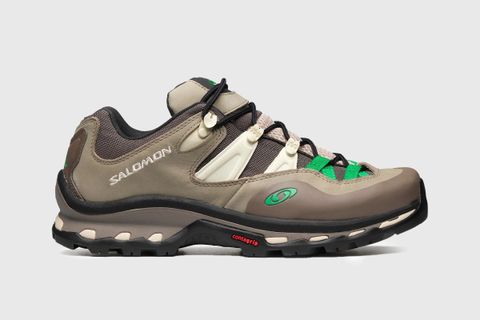Zen Hansen Turns Cast-Off Hair Into Keepsake Jewelry
When it’s not actively growing out of your scalp, hair can be a bit of a nuisance. It collects in your shower drain, clogs your vacuum, and, in most cases, ends up in the trash. But Zen Hansen, an artist and researcher, wants you to reconsider your cast-off keratin. The Idaho-based artist and researcher is reviving the lost art of hairwork, a practice popularized during the Victoria era, by weaving her own shed hair — as well as that of her many clients — into intricate jewelry. Highsnobiety chatted with Hansen about the history of hair, its purpose beyond the biological, and her own complicated relationship with the stuff growing out of her head.
Highsnobiety: How did you get into a subject as niche as hairwork?
Zen Hansen: I've always been drawn to eccentric things, weird things, odd things. It was shortly before COVID that I dove into hairwork. It really started because my aunt shared this piece with me that she had inherited from somebody — it’s got plaited hair in the back with initials and a portrait on the other side. I was super intrigued and wanted to learn more about why people did that, and how they made it.
[2022] was the first time I made a piece of table-braided work, and that was for my 40th birthday. It’s this braided hair ring with 40 of my grays. I wanted to learn hairwork not just to create something for myself — I realized that people want to learn how to do it too, so now I teach people.
HS: What sources did you consult to learn more about hairwork? I wouldn't even know where to start.
ZH: Mark Campbell's book, The Art of Hair Work, published in 1867, is the go-to guide for learning hairwork. He published it as a self-taught instructor of hair work, and it’s still what people use today — I had to teach myself from the book, basically.
HS: Were there other historical resources that you used?
ZH: Yes. Love Entwined: The Curious History of Hairwork in America by Helen Shoemaker is a really good guide for learning about hair’s symbolism historically, and how different communities and cultures have used hair. She talks about America, specifically. Also this anthropologist from London, Emma Tarlow, wrote a book called Entanglement: The Secret Lives of Hair — she looks at it from the wig industry side of things, but also writes about how hair as a fiber has been used throughout history.
But really, there is no school for [hairwork]. I've had a whole other career — I started to go to college during COVID and my professors were like, “We can't teach you what you're trying to learn. Just go do your own thing.” That's why I say I’m a researcher-slash-artist. I'm still trying to figure out the history of hair work myself. There’s a lot of overlap with Japanese kumihimo braiding techniques, and also bobbin lacing.
HS: You mentioned your past career. What were you doing before you dedicated your time to hairwork?
ZH: I’m a very eccentric introvert. I had a whole career in fly fishing, a Japanese kind of fly fishing called tenkara. Also hydroponics. I also have a huge cabinet of curiosities — I delved into hobby taxidermy for a while.
HS: Can you give us a super abbreviated timeline of hairwork and when it first emerged as a practice?
ZH: Well, we don't 100 percent know. Hair has been used as a sentimental or memorial object as long as humans have been around. But as far as making intricate jewelry with it, we see some examples from the 1500s, 1600s, and even earlier Indigenous cultures. It’s very muddled, but the Victorian or Georgian era popularized hair work. That's where we’ve gotten the most examples we still have left to examine today. But we’re still trying to dig up the history.
HS: You also have your own hairwork practice. What inspired you to start creating your own hair jewelry?
ZH: I’ve always been a sentimental person as far as genealogy and heirlooms go. When I saw that you could make jewelry with hair, and how symbolic and intrinsically personal that was, I knew I had to do it. That's why I specialize in the table braiding technique specifically. There are different types of hairwork like flat work and basket weaving and knots, but table work resonates so much with me — the magic and symbolism in memorial and sentimental work.
HS: You also sell hair braiding tools on your website — it seems like these tools aren’t really being produced in an accessible way.
ZH: There are kumihimo tools that can work, but they're just not ideal [for hairwork]. I’ve gotten such an overwhelming response from people either wanting to commission hairwork or wanting to learn it that I realized there’s a market for the tools. So I tried to create them to provide that opportunity for other people to make their own hairwork.
HS: You're kind of helping to revive an art that might otherwise be at risk of dying out.
ZH: That's what Mark Campbell tried to do — it's kind of funny; I feel like I'm following in his footsteps. I'm writing a biography on him because people refer to his book, but they don't know anything about him or where he learned hairwork.
HS: You take commissions from people who want their own piece of hair jewelry — are there any particular pieces that have stood out?
ZH: Every single one of them is magic. I just started commissions this year… I just finished up one for a 20th anniversary — I did 20 strands for their 20th anniversary. I've done an engagement ring, but it hasn't been given yet.
HS: How long does the average piece of hairwork take to finish?
ZH: If I were to work nonstop from start to finish, it would probably take me three days to braid it. But it depends. For the last piece I did, [the client] gave me all her hair straight out of her hairbrush. So I spent days sorting her hair out of big bundles before I even got to the braiding table.
HS: I'm curious about the collection process — what advice would you give someone who wants to start collecting their own hair to send to you, or to make their own piece of hairwork out of?
ZH: I just actually published a guide to hair collection. Not everybody wants to collect their strands — they can use cut ponytails, cut hair, too. It just depends on what you want to do with it. It’s very individual per project.
HS: Hair seems like such a sustainable, renewable material — in most cases, you’d just throw it out.
ZH: My grand thesis question is basically: What factors in our society push us to view hair either as a treasure or trash? Throughout history, hair has not held the same meaning for people in different groups.What is it that changes our perspectives about hair, and will we see it as a resource beyond our heads? Do we need that? Or is it too personal that we can't detach ourselves from it?
HS: Hair is a very intimate, sensitive thing for a lot of people. What’s your own relationship with your hair like?
ZH: That's a tough one. My past with my hair has been very troubled… I have a disorder called trichotillomania [also known as hair-pulling disorder]. It’s ironic that it's circled back around to hairwork becoming my life passion. The thing that has tormented me my whole life is the thing that brings me joy.


